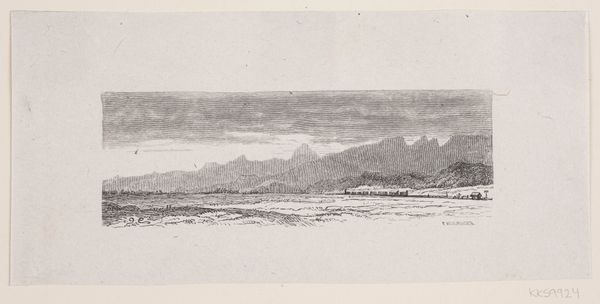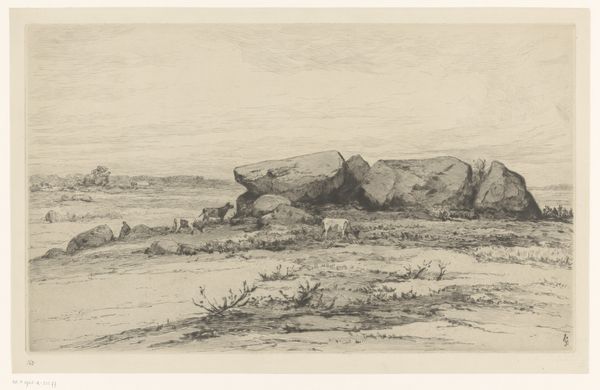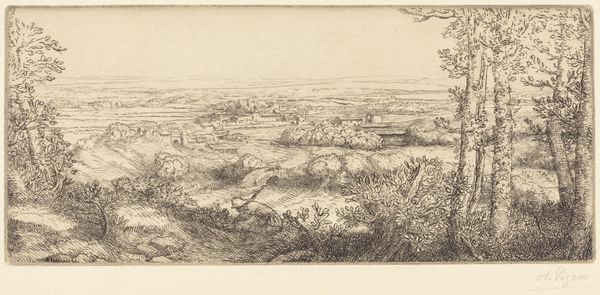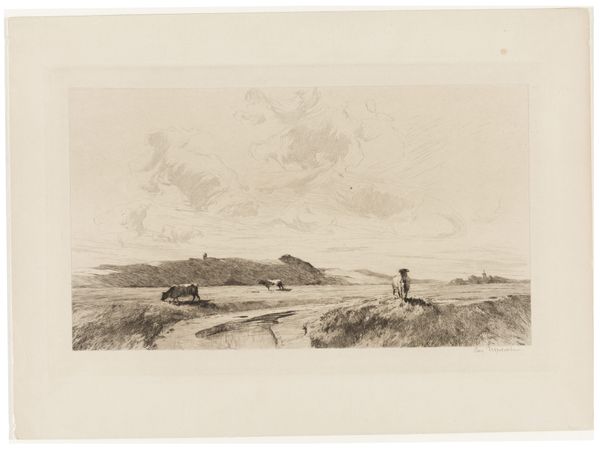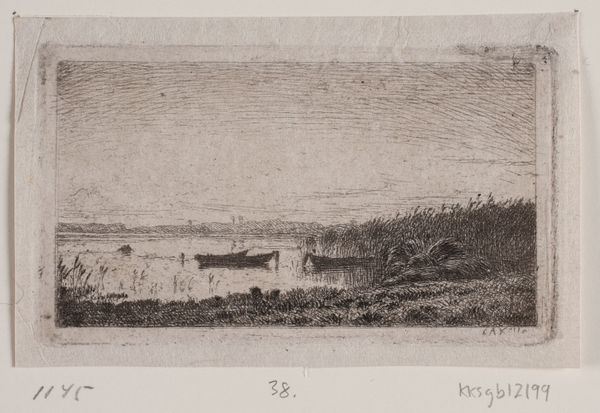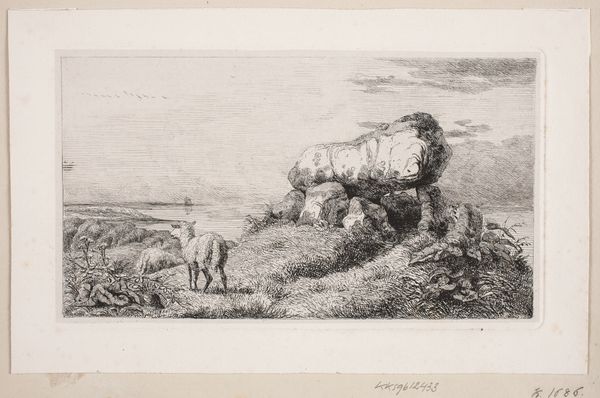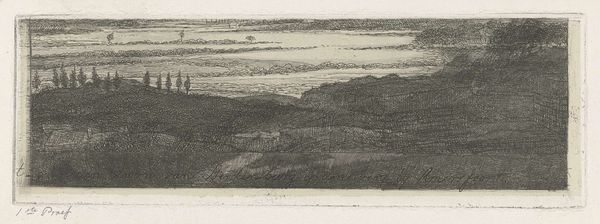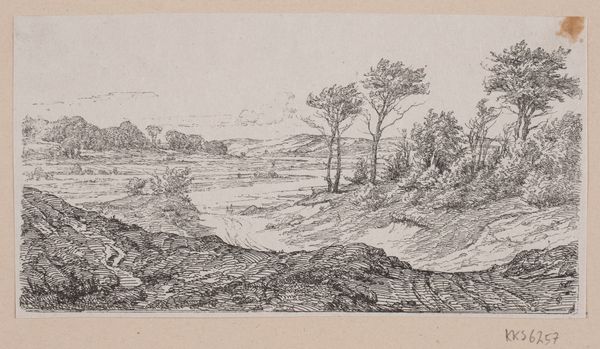
Begyndelsesvignet til St. St. Blicher: Sømand og Landmand 1876 - 1881
0:00
0:00
drawing, ink, pen
#
pencil drawn
#
drawing
#
pen sketch
#
pencil sketch
#
landscape
#
ink
#
pencil drawing
#
pen
#
academic-art
#
realism
Dimensions: 93 mm (height) x 168 mm (width) (bladmaal)
Curator: Welcome. Let's explore this intriguing drawing titled "Begyndelsesvignet til St. St. Blicher: Sømand og Landmand," created between 1876 and 1881. The artwork, crafted with pen and ink, resides here at the SMK, Statens Museum for Kunst. Editor: It immediately evokes a sense of starkness, almost a bleak beauty. The rugged coastline, the choppy sea – it feels quite somber, almost elemental in its raw depiction of nature and the lives interwoven with it. Curator: Exactly. The vignette connects deeply with the themes prominent in Blicher’s writing – the precarious existence of rural communities, the ever-present power of nature, and the constant negotiation between land and sea that defines coastal life. Think about the societal impact of seafaring at the time. Editor: And that tension is powerfully illustrated by the drawing's materiality. The medium itself – the precision of ink and the unforgiving nature of pen – mirror the demanding nature of the subjects depicted. It’s fascinating how such simple materials evoke complex realities of production and making. Curator: Indeed. The landscape style, rendered with realism, captures not only a visual likeness, but also the mood, social relationships, and existential uncertainties pervasive in Blicher's work. The figures perched on the cliff become symbolic of human vulnerability amidst natural forces, echoing broader concerns about identity and societal structures of that period. Editor: Looking closely, the very deliberate marks suggest an almost industrial process—consider the tools and techniques needed for the distribution of this image to reach mass audiences. What does that availability of knowledge represent when we look through the lens of contemporary consumerism? Curator: That interplay is critical for grasping the political atmosphere during Blicher’s lifetime, influencing artistic depictions that addressed anxieties related to displacement and social change during the agricultural crisis. The very form becomes a reflection of widespread precarity within these communities. Editor: This brief examination reminds me again that so much history is written and shaped with limited resources. Curator: I agree entirely. And perhaps through contemplating such simple sketches we gain insight into understanding not just aesthetics but socio-political structures through art history.
Comments
No comments
Be the first to comment and join the conversation on the ultimate creative platform.
